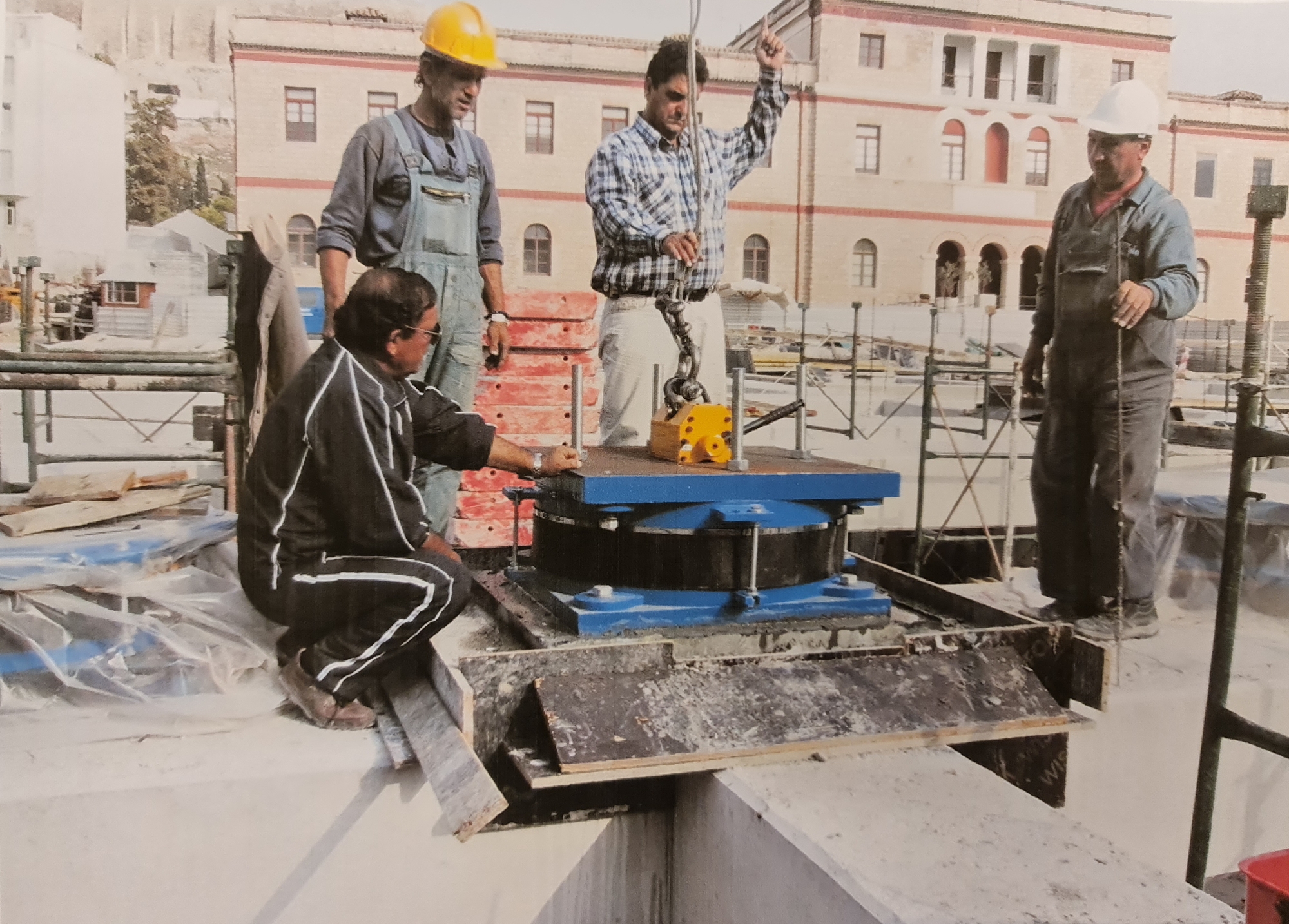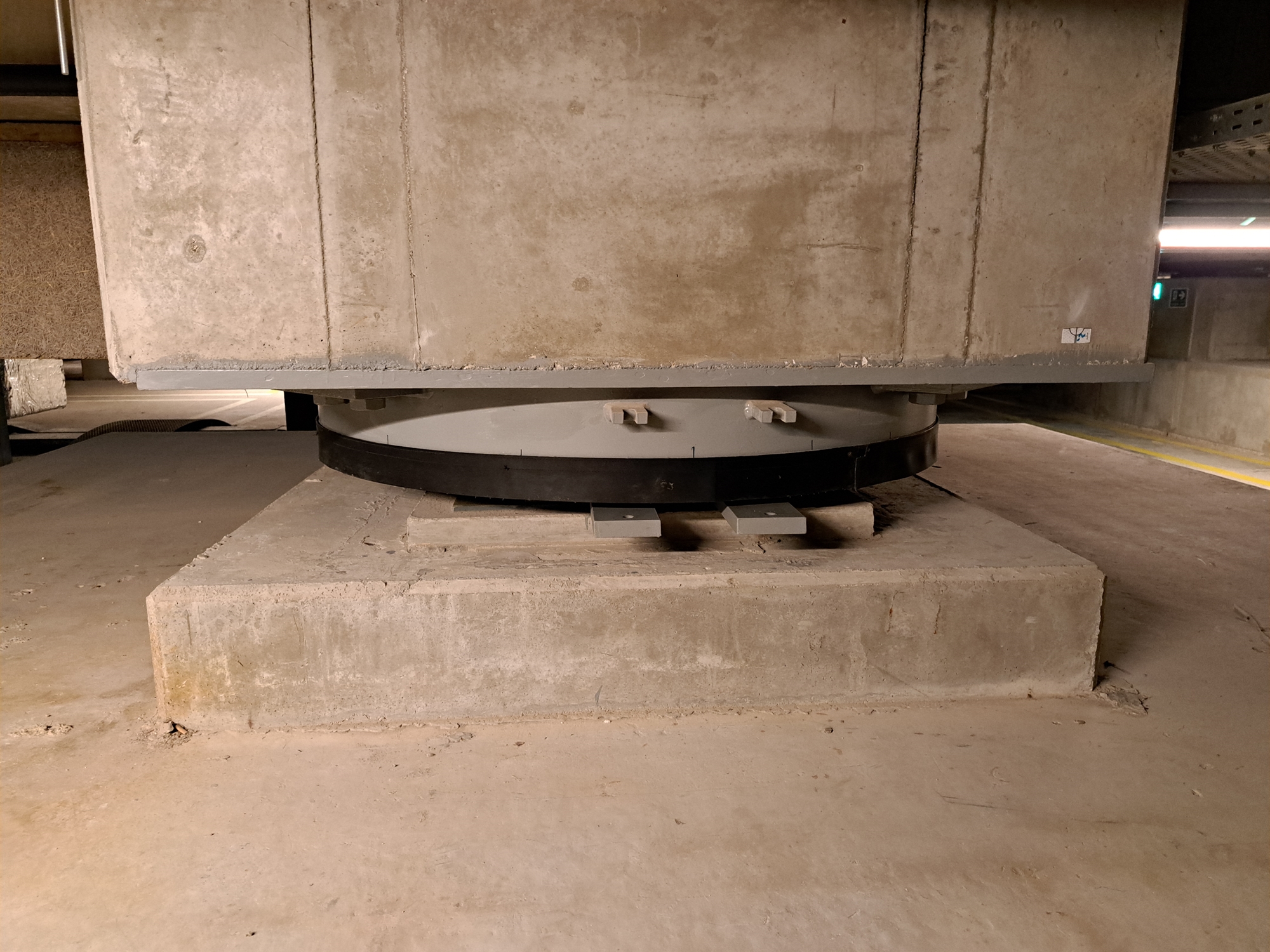
Meeting chaired by the Prime Minister earthquake protection took place yesterday at Megaros Maximos. As it was decided, their renewal will be organized in the near future. Preliminary seismic inspection of public buildingswith a focus on some 30,000 buildings considered critical such as schools and hospitals.
Minister of Climate Crisis and Civil Protection attended the meeting Christos Stylianides (who was put in charge of the project), members of the cabinet, head of the UASP Efthymis Lekkas and TEE President George Stasinos.
The goal is to make checks mandatory for a certain period of time. Particular attention will be paid to crowded places or buildings for special purposes.
The main topic of the meeting was the inspection of about 64,000 public buildings (since about 16,000 out of 80,000 were inspected in previous years). Particular attention will be paid to those facilities that are considered to be of particular importance, such as public areas or special purpose buildings. According to reports, in the coming days there will be a second meeting at the Ministry of Civil Protection to establish a plan on a concrete basis. Naturally, the OASP (who has the experience and competence) will take over the organization of the scheme with the support of the Technical Chamber. In fact, the possibility of organizing TEE technical workshops to certify engineers, who will then carry out inspections, is being considered.
However, given that UASP is responsible for anti-seismic policy, but cannot oblige government agencies to carry out inspections, a legal formula is being sought that would make inspections mandatory within a certain period of time. time. The inspections will be carried out in accordance with the Regulation on Interventions (KANEPE), which was revised in 2022. All buildings where a problem is discovered during the primary inspection, or where there is a report from the building owner, are subject to a secondary inspection. will follow. OASP has calculated that the percentage of buildings requiring secondary inspection does not exceed 3-4% of the total.
According to what was reported at the meeting, OASP will also start revising the seismic risk map (it was revised after the 1999 earthquake) in the next period. New anti-seismic regulation (NEAK) will be replaced by European (Eurocode). At the same time, OASP is working in collaboration with the Ministry of Culture to establish earthquake resistance requirements for monuments.

The four most earthquake-resistant buildings and their secrets
OUR Roof of the Onassis Foundation on Syngrove Avenue, new acropolis museum in Makrygiannis, National Library of Greece And National OperaV Stavros Niarchos Foundation Cultural Center in Kalita. These are, in order of construction, the four most earthquake-resistant buildings in Greece. All four used the same technology, a seismic isolation system that allows the building to move independently of the ground during an earthquake. Thus, it is not only prevented from collapsing, but also minimizes damage even in the event of a very strong earthquake.
In each case, there were difficulties in the construction. “When the construction of the museum began, in our country only gas storage facilities in Revitus had such technologies,” explains George Karageorgos, technical adviser to the Acropolis Museum. “The museum used plain bearings. The stops are two metal plates placed at the base of the building columns, between which there is a hollow piece of steel (slider). Simplifying, we could describe it as two slices of bread with a slice of tomato in between. Therefore, when an earthquake occurs, the bearings dampen the horizontal seismic action, which is also the strongest. Instead of the building moving with the ground, the slider, the sliding part, moves, and the building moves slightly, without strong vibrations.
The Acropolis Museum has 94 pedestals, the same number as the columns. “The basements were built first, reaching level -4. Then, where the first basement floor ends, the foundation was laid, and then three floors of the building were erected. All poles have the same diameter (1.20 meters) and since they are cylindrical, special metal types (stainless steel molds) were used to make them. The columns were so densely reinforced (including iron) that if you saw this when we poured concrete, you would think that the structure would be iron. The Acropolis Museum, because of the treasures it contains, has been carefully studied and built with even greater care. Its anti-seismic system has already been tested in several earthquakes in previous years and has worked perfectly.”
In the case of the Roof, the Onassis Foundation required that the structure be reinforced more than necessary. “An earthquake radiates energy that a building must absorb. The design assumes that the building may suffer some damage that needs to be repaired. However, in buildings of great importance, the developer may require that the design be such that even the possibility of damage is minimized,” explains Christos Kostikaspresident of the static research company OMETE, which prepared the study(s) of the Roof.
The roof has nine cellars and four floors. 46 spare parts were placed on the roof of the first basement (-1), at the “heads” of the columns. “The bearings give the building the ability to move slightly and in a seemingly controlled manner. The roof, for example, can be moved by 30 cm, and for this reason there is a gap for movement along the perimeter of the first floor ceiling. In addition, the basement roof has a horizontal grid that makes the columns move together in an earthquake as a single object.” The building’s four floors are also designed to withstand the movements of the building without deforming.

Two problems
In the case of the Cultural Center, there were two different problems. The first one concerned low-quality soils, since the territory is located next to the sea, and the second one – a canopy, which was already a unique design. “To improve the quality of the soil, piles up to 22 meters deep were built. In addition, taking into account the characteristics of the soil and the latest version of the Eurocode (i.e. the European anti-seismic regulation), the seismic requirements of the two buildings during their design were five times higher than that of a conventional building,” explains Nikos Polemikos, director of facilities at the Stavros Niarchos Foundation Cultural Center (SNFCC). “The buildings of the National Library and the National Opera are supported by 323 seismic isolators, which are located at the level of the first basement floor.”
In any case, building a barn was a problem. “It was an architectural and construction achievement,” says Mr. Polemikos. “Because there was nothing in the regulations that could be relied upon, its design was based on consistent reviews of building materials (ferrocement) by NTUA. In fact, prototypes were made in 1:1 scale and tested at the Aristotelian University of the heads of the roof pillars, which also make up its landing mechanism. Seismic isolation of the roof structure is achieved through a complex mechanism. “The heads from the racks consist of a system of springs and dampers. Thus, the caps allow the dome to withstand air movements as well as earthquakes. In fact, his movements are monitored 24 hours a day, so there is a detailed record of his behavior in relation to external factors.
POINT OF VIEW
Seismic isolation in existing structures, as well as
Christ Yarlelis*
In Japan, earthquakes of magnitude 7 or more occur almost every two years. However, many buildings have no damage at all. The reason is the use of seismic isolation and damping systems. Seismic isolators are structural elements that are inserted between the superstructure and the base of the structure, effectively separating them, as well as providing damping (i.e., the consumption of seismic energy due to friction).
These systems have been around for many years, but their use has increased over the last decade due to a sharp decline in their cost. Now the final cost of seismically isolated structures is the same or even lower than that of conventional ones. This prompted countries such as Italy and New Zealand to introduce the method into conventional housing and office construction following the 2009 and 2011 earthquakes respectively. At the same time, neighboring Turkey is the first country in the world to make seismic isolation mandatory in high-value buildings such as hospitals since 2012. It is noteworthy that, according to the information currently available, all seismically isolated hospitals in the region affected by the recent earthquake functioned properly, in contrast to the thousands of buildings that collapsed or received irreparable damage.
A well designed, earthquake coded, conventional building, when it reaches the earthquake for which it was designed, shows damage to its structural members (no destruction). But even at lower earthquake levels, material damage will be caused to its contents, i.e. glass, pipes, furniture, books, works of art, etc. will be overturned. On the contrary, a seismically isolated building provides complete anti-seismic protection, since the forces and accelerations of an earthquake decrease both in its shell and inside it. Thus, seismic isolation gives the building: a) Significant liberation of the architectural design from the constraints of seismic design. b) Minimizing the possibility of damage to structural elements of the building. c) Protection of the contents of the building. d) Complete continuity of the building after the earthquake. e) Reducing the size and number of columns and walls, resulting in more elegant designs as well as more usable space. f) Reducing construction costs and saving natural resources due to the significant lightening of the loads on the foundation, as well as the above-mentioned reduction in the size and number of columns and walls.
It is easy to understand that important building infrastructure (hospitals, government buildings) must be seismically isolated in order to be able to function after a major earthquake when they are most needed. However, seismic isolation is also applicable to conventional structures, new or existing. The reason why it has not become more widely used is ignorance, because we, unfortunately, discuss only the seismic resistance of structures and the need for good static studies after disasters.
* Mr. Christos Yarlelis – civil engineer, researcher.
Source: Kathimerini
Ashley Bailey is a talented author and journalist known for her writing on trending topics. Currently working at 247 news reel, she brings readers fresh perspectives on current issues. With her well-researched and thought-provoking articles, she captures the zeitgeist and stays ahead of the latest trends. Ashley’s writing is a must-read for anyone interested in staying up-to-date with the latest developments.